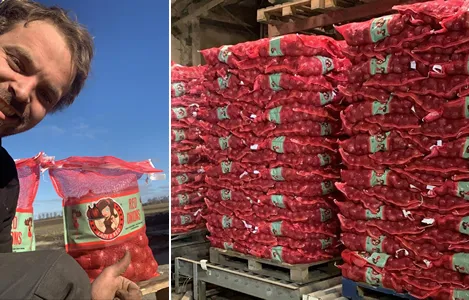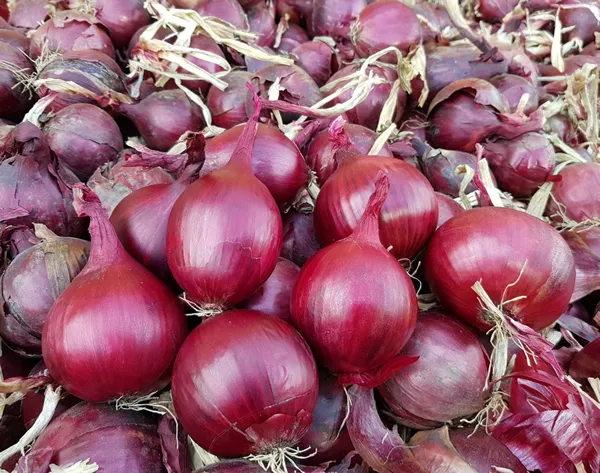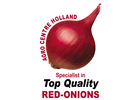India imposed an onion export stop in the first half of the season. That led to massive amounts of Dutch red onions being exported to Asia. The cards on the market have been shuffled quite differently now. Carl van de Wiel of Agro Centre Holland calls it a fine line. This Dutch company specializes in packing and exporting red onions and shallots. "We were able to send many onions to Asia for two years in a row. That's truly unique but offers no guarantee for the future. We desperately need crops to fail elsewhere."

"Nobody expected it to be full steam ahead in Asia again last year. Countries like Bangladesh and Sri Lanka took huge volumes. That region eventually took even more onions than the previous year. That was also because more exporters started to focus on Asia. The start was fantastic, the end a little less so. There were shipping problems, so many containers arrived too late."
"We mustn't forget that the Netherlands is far down on Asian buyers' lists. Our onions are far less popular than Indian onions. If they aren't available, people first look for onions from Pakistan or Turkey. And only then do Egypt and the Netherlands come into play, in that order of preference," says Carl.
"So, something must go wrong on the world market before they knock on the Netherlands' door. That's now happened for two consecutive years. The red onion acreage is rising again this year. In 2019, we were at about 4,000 hectares, and in 2020 at 4,500. Now we're heading for 5,000. If Asia needs our onions, they'll be gone in no time. But there's also a good chance that this won't happen."
"The market is currently much quieter. There are very few exports, despite prices not being super high. There's still plenty of onions in stock too. The red onions quality is still good. I think even better than the yellow ones. Therefore, I don't expect we'll need many Egyptian onions. We have enough of our own. Just like last year, when we didn't import many onions from Egypt either," continues Carl. "Prices are high in India and Pakistan. So, I think there will be more opportunities for Egyptian exporters in the Middle East this year."

"The hospitality and foodservice industries take a lot of red onions. We do miss those sales. Prices for the sale-ready Dutch red onions are between €0.22 and €0.30. If farmers agree, I hope we can maintain these prices. Purchase prices are often unrealistic. With yellow onions, it's even more extreme," explains Van de Wiel.
"You have to pay growers €0.19 or €0.20. That's almost the same as bale prices. With red onions, clients across the board are willing to pay more for quality. Buyers would rather pay a few cents more for excellent quality than not, and get inferior quality. But then, of course, you have to ensure that the shipment is prepared perfectly."
The pink onion market fared well too. "Asian buyers prefer pink onions. Last autumn, demand from Asia was high, and prices were good. So I expect that most exporters decided to put their money where their mouths are. Shallots have also been expensive all year. This is also a true hospitality product. Despite that, French shallot stocks are lower. That's due to high domestic consumption," concludes Carl.
 For more information:
For more information:
Carl van de Wiel
Agro Centre Holland
11 Noordseweg
4772 PG, Langeweg, NL
Tel: + 31 (0) 168 371 230
Fax: +31 (0) 168 371 235
Email: info@red-onion.com
Website: www.red-onion.com
